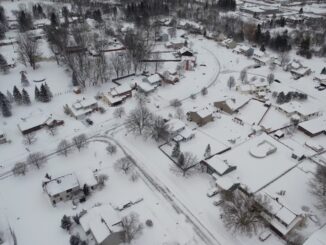
This week, Mayor Eric Adams released proposed guidelines for Local Law 97, trailblazing climate legislation that limits fossil fuel emissions from large buildings.
Not everyone was happy with the proposed rules. Much of the criticism was focused on an option that would allow buildings to apply for a two-year, fee-free extension if they would not be in compliance by the time the law goes into effect on Jan 1.
Some environmental activists oppose the extension, saying it gives the real estate industry a loophole to delay urgent climate reform. On the other side of the issue, some building owners and residents feel two years is not enough time to enact repairs that could cost millions of dollars.
The law, passed in 2019, set a series of deadlines for buildings to reduce emissions by certain amounts, but the city’s Department of Buildings had not updated the rules around the law since last year. The first deadline is 2024.
To qualify for the two-year extension, applicants must show “good faith efforts” to reduce emissions, a term that some opponents and supporters of Local Law 97 both say is too vaguely defined. The public may comment on the new rules until Oct. 24, after which they become law.
“This is a disaster,” said Pete Sikora, who was on the advisory board for Local Law 97 and serves as the climate and inequality campaigns director of New York Communities for Change, a nonprofit organization. Loosening the rules, he said, “endangers a huge job-creation and pollution-reduction set of policies.”
Buildings are responsible for about 70 percent of New York City’s greenhouse gas emissions, which contribute to disrupted weather patterns and rising sea levels. The law targets some of the city’s biggest emitters: about 50,000 properties that are larger than 25,000 square feet. So far, close to 90 percent of these buildings are in compliance for next year. The next deadline, in 2030, calls for stricter limits: a 40 percent cut in emissions. By 2050, zero emissions is the goal. Violators face potentially steep penalties.
Climate Change in New York City
- N.Y.C.’s Climate Chief: Rohit T. Aggarwala oversees a slowly sinking metropolis surrounded by water, paved over natural resources, with over eight million residents and little tree canopy. He remains a pragmatist, undaunted by existential dread.
- Composting: Here’s what you need to know as a program requiring New Yorkers to separate their food waste from regular trash rolls out across the city.
- Renting an Electric Car: A carless New Yorker was determined to rent an electric vehicle, but from booking to driving, there’s a learning curve.
- A Climate Hub: Mayor Eric Adams announced a $700 million campus on Governors Island dedicated to finding solutions to address the climate crisis. It is expected to open in 2028.
City Councilman James F. Gennaro, a Queens Democrat who heads the council’s Committee on Environmental Protection, Resiliency and Waterfronts, said the “good faith efforts” option was a helpful compromise between the goals of Local Law 97 and the potential cost of compliance.
“The two-year extension is a very effective way for the administration to hold people accountable and also to understand the burdens that this places on real estate owners, many of whom are co-op operators and shareholders who live in the outer boroughs and face significant challenges in coming into compliance,” he said.



